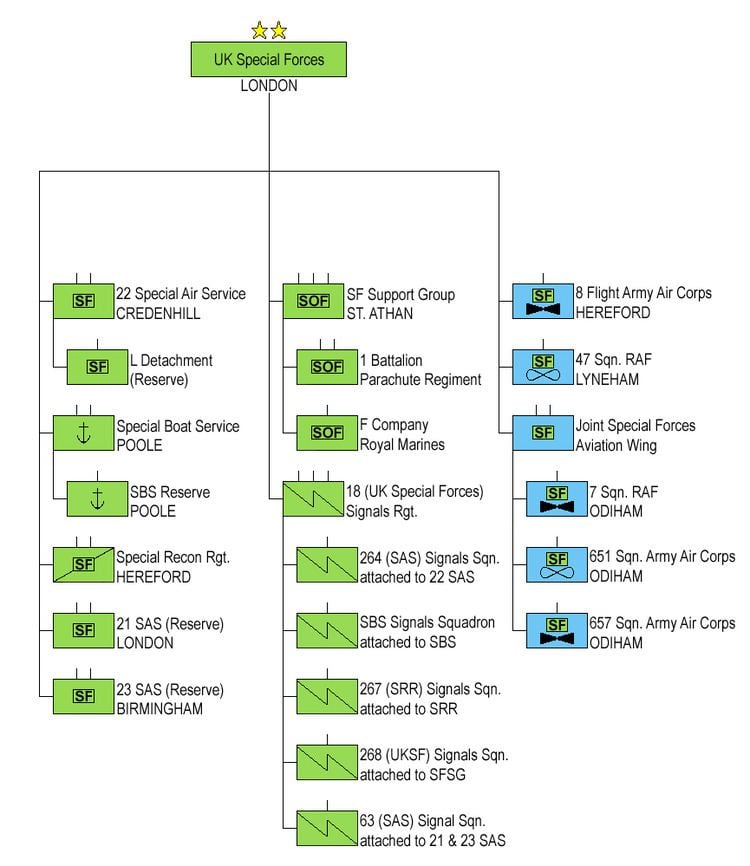Active 2001 – present Type Joint unit | Size Wing | |
 | ||
Role Special forces aviation | ||
The Joint Special Forces Aviation Wing is a joint-service organisation which provides aviation support to United Kingdom Special Forces, using both fixed wing and rotary wing aircraft. The wing is based at RAF Odiham.
The Wing was formed on 2 April 2001, bringing together 657 Squadron AAC and 7 Squadron RAF into a single unit in support of United Kingdom Special Forces with 8 Flight AAC (now No. 658 Squadron AAC) joining in 2008.
The aircraft all based at different MoD establishments including:
The Wing is under peacetime command of the Station Commander of RAF Odiham, but the single services retain full command of their respective personnel. It enjoys a charitable affiliation with the Worshipful Company of Curriers in the City of London.
Afghanistan crash
On 26 April 2014, a Lynx of 657 Squadron crashed in Takhta Pul district of Kandahar Province, killing all five British personnel on board. They were Captain Thomas Clarke, Warrant Officer 2 Spencer Faulkner and Corporal James Walters of the Army Air Corps, Flight Lieutenant Rakesh Chauhan of the Royal Air Force and Lance Corporal Oliver Thomas of the Intelligence Corps. As at 28 April 2014, the cause was described as an "accident", despite Taliban claims that they had caused the crash. The purpose of the mission has speculated upon, but has been described as a "routine training mission". The site, variously described as "close to Kandahar base" and "30 miles from the Pakistani border", had been "secured" for recovery of the bodies and aircraft.
A full report into the accident was published in July 2015, by the Ministry of Defence and the Military Aviation Authority. The Service Inquiry revealed "procedural drift", which allowed standards to dilute during sustained operations in theatre, to be a major factor. The SI Panel also commented that the crew may also have been distracted trying to establish visual contact with a second Lynx helicopter and that the radar altimeter was not being used effectively as the ‘bugged’ setting was too low to initiate a recovery in a descent. It was being routinely set lower than required by the standard operating procedures without challenge. The report also highlighted that the pilot had had less than six hours sleep the previous night before and was possibly fatigued.
